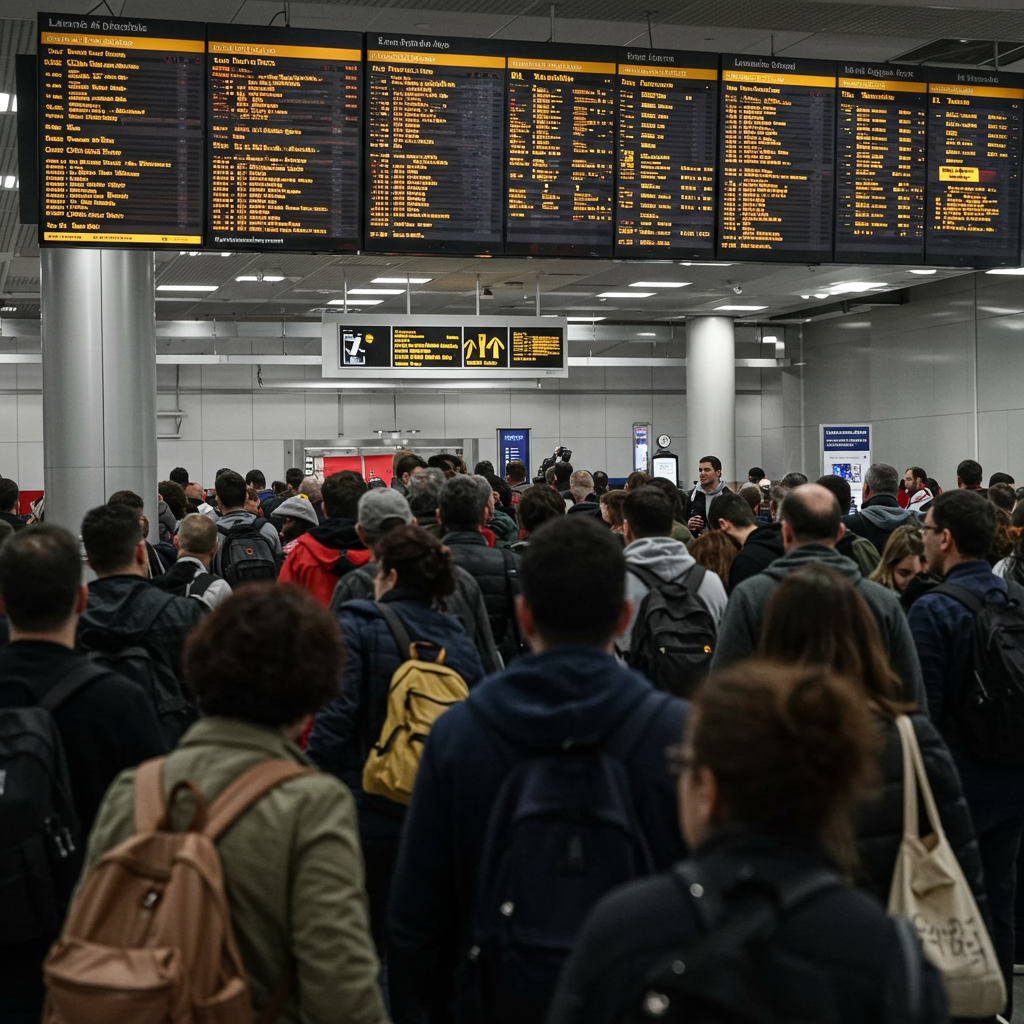The global trade landscape faces seismic shifts. Recent actions from the United States, notably under President Donald Trump, have sent shockwaves across Asia, targeting a wide array of nations with the threat of steep import duties. This escalating “tariff war” has ignited intense negotiations and raised pressing questions: who stands to gain, who stands to lose, and what does this mean for the future of international commerce and long-held alliances?
Trump’s Tariff Tempest Hits Asia
The situation intensified dramatically when threats of significant tariffs landed on the desks of leaders across Asia. Japan, a steadfast US ally, found itself squarely in the crosshairs with a proposed 25% levy on its goods. This was despite Tokyo’s strenuous efforts over many negotiation rounds to avert such action, seeking vital concessions for its large automotive sector while resisting US demands to open markets, particularly for American rice.
The shift in tone from the US President towards Japan, from initially describing them as “tough” negotiators to later labeling them “spoiled,” highlighted the strain as talks faltered. Japan’s chief tariff negotiator traveled to Washington DC multiple times, reportedly over seven visits since April, yet these trips seemingly yielded little progress against the backdrop of sweeping tariffs announced earlier against both allies and adversaries.
This period saw tariff letters dispatched to 23 nations globally, with a significant 14 located in Asia. Many of these countries are export-driven manufacturing powerhouses, including nations like South Korea and Sri Lanka. The pressure mounted further with announcements of high tariffs on specific partners, such as a 35% rate proposed for goods imported from Canada. President Trump also articulated plans to potentially raise blanket tariffs from 10% to as high as 20% on most trade partners, downplaying concerns about inflationary impacts.
Navigating Uncertainty: Deadlines, Deals, and Supply Chain Chaos
Facing this new reality, affected countries were given a deadline, later extended to August 1st, to reach trade agreements with the US. However, the challenging experience of Japan, a close ally actively seeking a deal but still confronting the possibility of steep tariffs, caused many to question their own chances of success.
In one view, this extended deadline offered a temporary reprieve. Suan Teck Kin, head of research at United Overseas Bank, suggested this created positive pressure for further negotiations ahead of the August 1st cutoff. Growing economies like Thailand and Malaysia, which received tariff letters, were seen as particularly eager to find resolutions. These nations also faced the added complexity of being caught between US-China tensions, dealing with Washington’s focus on goods rerouted through third countries, known as transhipped goods.
The intricate nature of trade agreements suggests further extensions are likely. Business lecturer Alex Capri from the National University of Singapore pointed out that the demands outlined in the tariff letters were not always entirely clear, making implementation challenging. The specific treatment of transhipped goods, for instance, levied as part of Vietnam’s trade deal with the US, raised questions about whether rules applied solely to finished goods or included imported components. Tracking complex global supply chains under such conditions would demand far more sophisticated technology and involve numerous third parties, tech firms, and logistic partners in a process expected to be slow, long-term, and constantly evolving.
Who Bears the Brunt? Asian Economies Under Pressure
The emerging consensus is that tariffs are not a fleeting phenomenon but a lasting feature of global trade. This has significant implications, with global trade itself often cited as the primary loser. Businesses worldwide, spanning the US, Europe, and China, particularly those with global operations, face ongoing risks. This uncertainty hurts not only exporters but also impacts US importers and ultimately, American consumers who may face higher prices.
For large parts of Asia, whose remarkable economic rise has been fueled by robust manufacturing sectors exporting everything from electronics to textiles, these tariffs represent a substantial blow to their ambitions. While assessing clear winners and losers in international trade, especially between deeply intertwined economies like the US and China, is unwise according to experts like Alex Capri, it is clear that some countries are positioned to lose more than others.
Leverage Matters: Vulnerable vs. Resilient Nations
The ability of a nation to withstand pressure and negotiate effectively appears closely linked to its economic size and geopolitical influence. Countries heavily reliant on exports with less leverage face greater vulnerability. Vietnam, despite being among the first in Asia to strike a deal with the US, has faced potential levies as high as 40%. Similarly, Cambodia, a poor nation heavily dependent on exports, has been negotiating a deal while grappling with threats of 35% tariffs. These examples highlight the limited bargaining power some nations possess.
In contrast, South Korea and Japan, possessing wealthier economies and stronger geopolitical ties with the US, are seen as better positioned to potentially resist or hold out longer against tariff demands. India, a significant economy with its own strategic leverage, had not yet received a tariff letter at the time, though a deal seemed pending, held up by key sticking points including access to its agricultural market and import regulations.
A Closer Look: Japan’s Stance and the Alliance Strain
Despite the close economic and military relationship between the US and Japan, economist Jesper Koll observed that Tokyo appeared to be treated similarly to other Asian trade partners. This could potentially transform the dynamics of the alliance. Japan, with its substantial financial reserves, seemed prepared for a prolonged negotiation.
Koll noted Japan’s tough negotiating stance, suggesting it may have annoyed the US President. Prime Minister Shigeru Ishiba demonstrated this resolve by refusing US pressure on sensitive domestic issues, such as importing American rice despite a domestic shortage driving up prices, choosing instead to protect local farmers. Japan also resisted demands to increase its military spending.
Demonstrating its preparedness, Japan declared an economic emergency and established hundreds of consultation centers for affected companies immediately after initial US tariff announcements. Japan, according to Koll, sought a “credible” deal, questioning the long-term stability of any agreement given the US President’s perceived unpredictability. The timing, with Japan’s upper-house election approaching, made a deal by the August deadline seem unlikely, though experts did not anticipate the tariffs forcing a recession in Japan.
The Geopolitical Chessboard: US, China, and Asia’s Future
Asia has long been recognized as a key strategic arena for competition between Washington and Beijing. Some analysts suggest that the US approach to tariffs, particularly the repeated extension of deadlines, might inadvertently weaken its bargaining position. NUS economics professor David Jacks argued that by revealing the complexity of the demands, the US might show its hand is not as strong as it appears.
The method of communication, such as posting tariff letters online instead of through traditional diplomatic channels, was described by Alex Capri as “political theatre” that could backfire. The resulting confusion, he suggested, could be a significant advantage for China, which aims to portray itself as a stable alternative amidst perceived US unpredictability.
However, replacing access to the vast US market is no easy task. Moreover, China faces its own set of tensions and complex relationships with various countries across Asia, including nations like Vietnam and Japan. China itself is engaged in ongoing trade negotiations with the US, though with a slightly later deadline for a comprehensive agreement.
In response to past and anticipated tariffs, many businesses, both international brands and Chinese firms, have already initiated or accelerated the relocation of manufacturing production out of China, primarily towards Southeast Asia. This trend was starkly illustrated by the experience of a cowboy boot factory in China that saw sales plummet after 15% US tariffs were imposed, forcing workforce reductions. Businesses are grappling with the dilemma of moving production – abandoning long-term skilled workers – or staying and facing potentially prohibitive tariff costs that could wipe out profits for suppliers, making manufacturing in China “unsustainable” under certain conditions.
Cambodia has emerged as a significant beneficiary of this relocation trend, with a large percentage of its clothing factories now reportedly Chinese-run or owned. China’s substantial investments in Cambodia through the Belt and Road Initiative (BRI) further facilitate this shift. This movement is part of a broader Chinese strategy to diversify trade partners, increasing ties with BRI countries. While production moves, material sourcing often remains linked to China, ensuring continued financial flows.
China is also adapting by pivoting towards higher-value manufacturing sectors like solar panels and AI, contributing to recent record trade surpluses. Chinese firms, initially skeptical during the first round of tariffs, are now seriously exploring production bases beyond Southeast Asia, potentially looking at regions like Africa or Latin America as hedges against future tariff risks.
Ultimately, determining who gains more friends or achieves strategic victories in this evolving trade conflict remains uncertain. Professor Jacks used the analogy of a “divorce” between the US and China, suggesting that reaching a new equilibrium will be a tough process spanning years, potentially decades, and fundamentally reshaping established trade relationships and global ties.
Frequently Asked Questions
How have US tariffs recently impacted countries across Asia?
US tariff actions have created significant uncertainty and disruption across Asia. Recent threats include a 25% levy on Japan and letters sent to 14 Asian nations, many being export hubs. There’s also a proposed increase in blanket tariffs on most partners, with a deadline of August 1st for countries to strike deals. This pressure affects various sectors and has led to intense, often difficult, negotiations.
Where are businesses in Asia considering relocating production to avoid potential tariffs?
Many businesses, including major international brands and Chinese firms, are actively relocating manufacturing production out of China to circumvent potential US tariffs. Southeast Asia, particularly countries like Cambodia, has become a primary destination for this shift. This move is often driven by customer demand and the need to avoid high import duties, though some firms are also exploring options in regions like Africa and Latin America for further diversification.
Why is it difficult to identify clear “winners” and “losers” in the US-Asia trade conflict?
Identifying simple winners and losers is challenging due to the deeply interlinked nature of global economies. While Asian manufacturers and global trade are generally seen as negatively impacted, individual countries face varying degrees of vulnerability based on factors like export reliance, economic size, and geopolitical leverage. The situation is complex, involves long-term strategic shifts, and the outcomes are still unfolding across years, making a definitive assessment difficult.



